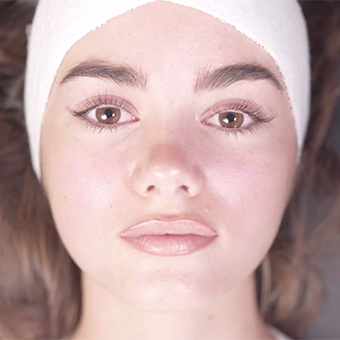posted on: September 27, 2023
Sponsored by: Elleebana
A persistent myth continues to circulate among lash technicians in the industry: “The product doesn’t work.” It’s disheartening to witness the frustration of technicians who blame the product for underwhelming results in their lash lift procedure. However, it is crucial to shed light on this issue and provide a more accurate perspective.
This is not an isolated problem limited to the lash industry. In various beauty sectors, such as nails, hair, and skin care, professionals often struggle to achieve consistent results with their products, including adhesives and nail polishes. The big question: Could so many brands truly have inconsistent production processes when creating such simple formulas?
Lotions are not complex formulas to produce. When manufacturing a large batch of products, the measurements should be consistent every time. Any deviation in the formula’s quantities can lead to poor performance, incorrect emulsification, or instability. Considering the substantial investments brands make and the importance of customer satisfaction, it’s highly unlikely they would jeopardize their products by neglecting to mix a batch correctly. After all, when we purchase beverages or shampoos from reputable brands, we expect consistency. Why should lotions be any different? It’s improbable that the formulas themselves change significantly; instead, the inconsistency likely comes from the person using the product.
As the human body changes throughout life, factors such as lifestyle, hormonal changes, diet, and supplementary intake can alter hair texture multiple times a year. Therefore, it is essential to acknowledge that many brands follow strict policies and production processes, including stability testing, to ensure product efficacy. These tests typically involve performing 50–100 applications on clients, with microbial stability reports confirming the product’s safety and effectiveness. Consequently, the likelihood of encountering a genuinely faulty batch is extremely low.
When assessing product performance, it is vital to consider the brand’s history and reputation. Brands that have been in business for a long time and consistently maintain customers and repeat business are a testament to the efficacy of their products. No brand can survive without repeat business—an indicator that most of its customers have positive experiences.
If you find that your lash lift is not achieving the desired results, consider certain factors about the client:
- Has their hair texture changed?
- Have they made any dietary changes or started using specific nutrients, supplements, or growth serums?
- Are they undergoing hormonal changes?
These factors can significantly impact the texture of their eyelashes, necessitating adjustments in processing time or technique.
You may also consider factors about your application:
- Was the lotion placement consistent?
- Was it applied from the base of the lashes to an adequate height?
- Was it left on for an appropriate duration based on the hair texture?
If the lift appears slightly underwhelming but some lift is evident, leaving the lotion to process for a little longer might be all that is needed. Adjusting the lotion placement and ensuring it is applied consistently across the lashes can also make[Text Wrapping Break]a difference.
Interestingly, there’s been an increase in clients using various home-care products, lash growth serums, and mascaras because of the pandemic. These factors can also change the texture of your client’s lashes—when they come back to have a treatment, their lashes may be more resistant than usual. Resistant lashes are not always thick lashes either; at Elleebana, we’ve worked on plenty of clients who look like they have thin hair texture, but the lashes are resistant to permanent wave lotions. It really is a case of readjusting the application; most of the time, this resolves the issue.
Elleebana
Step-by-Step Lash Lamination
Step 1:
Gently but thoroughly cleanse the entire eye area with Elleebana Makeup Remover on a cotton round or makeup pad. If needed, double cleanse to ensure no residue remains. Lightly rinse with warm water to remove any remaining makeup remover and then dry with a tissue.
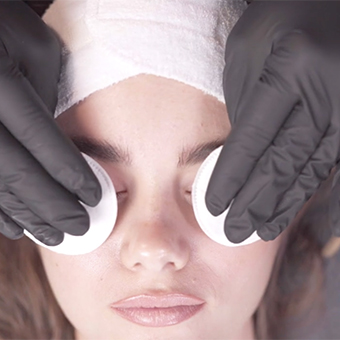
Step 2:
Protect the lower lashes by taping them down with under-eye pads, micropore tape, or sensitive tape. In addition to protection, this ensures the lower lashes are not attached to the upper lashes and lifted in the same upward direction.
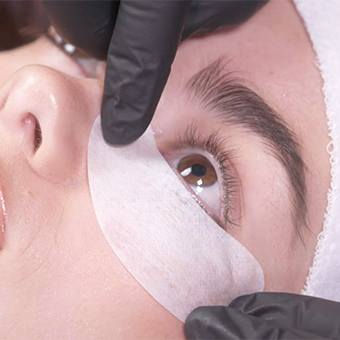
Step 3:
Use a Flex Shield or Flex Rod to avoid applying adhesive on the back of the rod. Place the rod or shield on the very edge of the lid, as close as possible to the root of the lashes. Continue this process the entire length of the lash line. Ensure the outer corners are not drooping and that no lashes are caught underneath the rod.
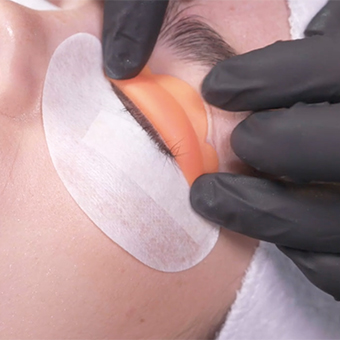
Step 4:
Apply a thin line of lash-lifting adhesive along the front of the rod to adhere the lashes into place. Allow a few seconds for the adhesive to become tacky. You may choose to work in sections at this point if you aren’t comfortable applying adhesive to the entire silicone rod.
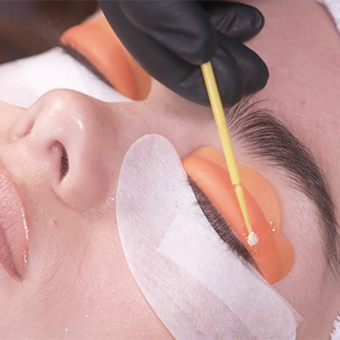
Step 5:
Using an Elleebana Precision Lifter Tool, scoop some lashes in the hooked section of the lifter tool and slowly lift, roll, and wrap the lashes firmly from the base up and around the silicone rod. Before releasing your lifted section, briefly hold the lashes in place. Repeat with the rest of the lashes. Using this lift, roll, and hold technique encourages the lashes to stay in this position on the rod. Be careful not to wrap the lashes before the adhesive is tacky.
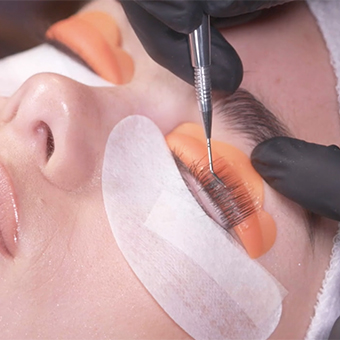
Step 6:
Open Step 1 of the Elleeplex Profusion Lash Lamination System and dispense into a tray, bowl, glue ring, or mixing dish. Use an application brush to paint the Step 1 lotion (lamination/lift lotion) from the base of the lashes to ¾ of the way up the lash. For a more dramatic lift, extend the lotion further to coat most of the lash.
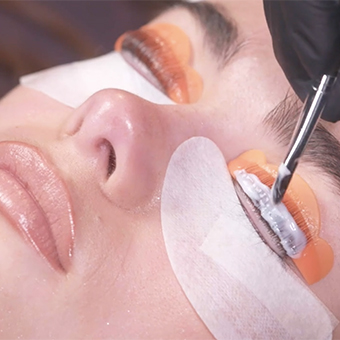
Step 7:
After the lamination lotion has processed, wipe off the lamination lotion with a dry cotton bud or micro brush, being careful not to disrupt the location of the lashes along the silicone rod. Relift any disturbed lashes. Remember to use micro brushes at this stage and avoid cross contamination of touching the brush from your adhesive to the client’s lashes.

Step 8:
Combine Step 2 setting lotion with Elleeplex ReGEN 2.0 Cream in a ratio of eight parts setting lotion to one part ReGEN in a mixing dish. Apply the setting lotion to the lashes with a clean application brush from the base of the lash up the entire lash, allowing the ReGEN Next Gen to nourish and hydrate the lash.
Step 9:
Prepare a half-filled kidney dish with warm (not hot) water. After the processing time is complete, remove the under-eye pads. Gently tilt the client’s head and rest the kidney dish with warm water beside the eye that you wish to rinse off. Dip a wet cotton pad in the warm water; press gently on the rod to soak the eye with the warm water and stroke the rod away from the eyelid in a downward motion. This step involves considerable rinsing to remove the setting lotion, break down the adhesive bonds, and allow the silicone rod to fall away. Repeat on the second eye. Use a tissue to absorb any water around the eye area and dry the lashes. Comb the lashes with a mascara wand to separate the lashes and assess the lift.
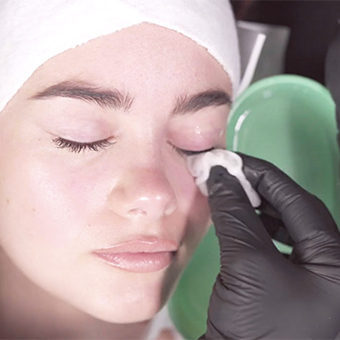
Before and After
- Log in to post comments



